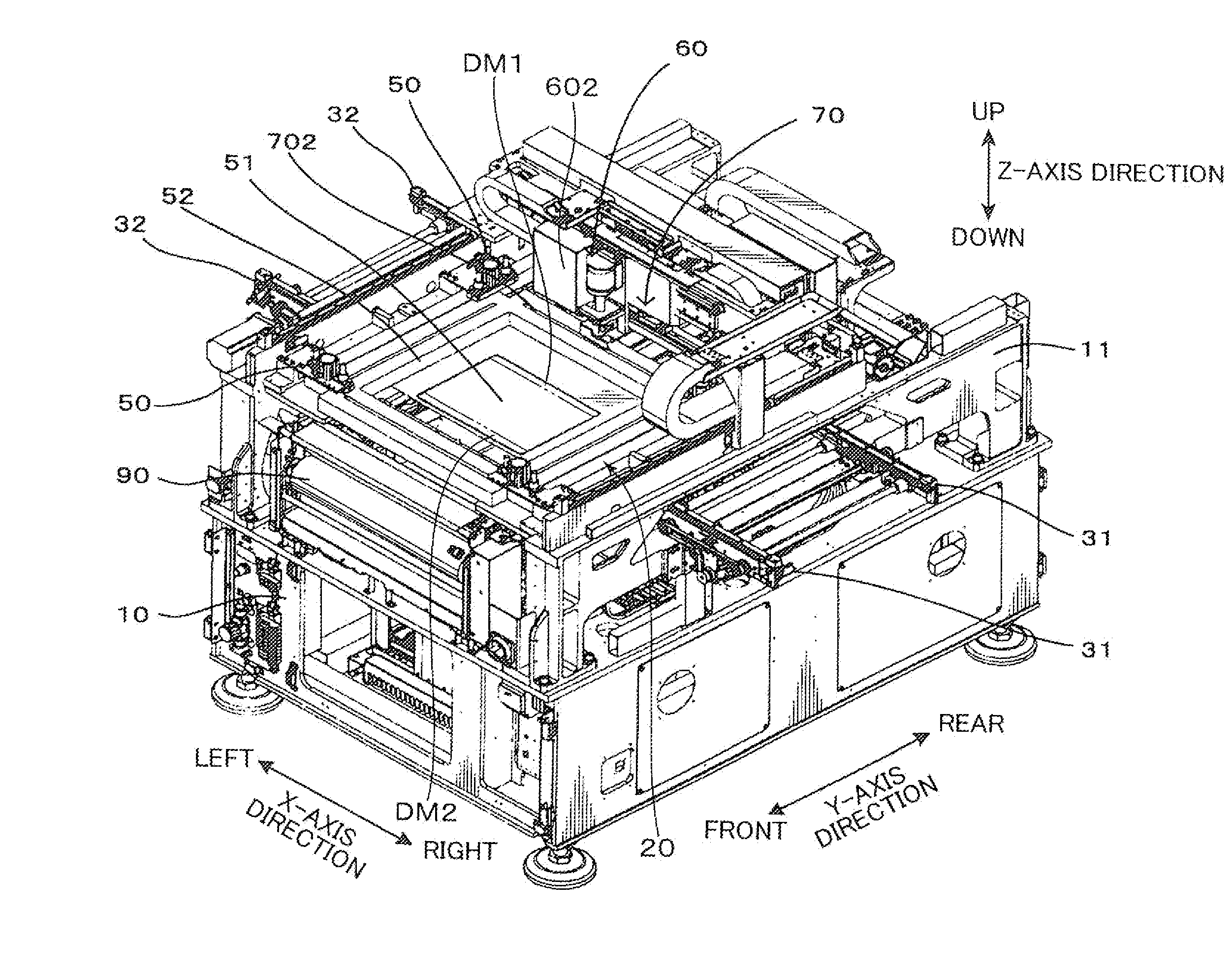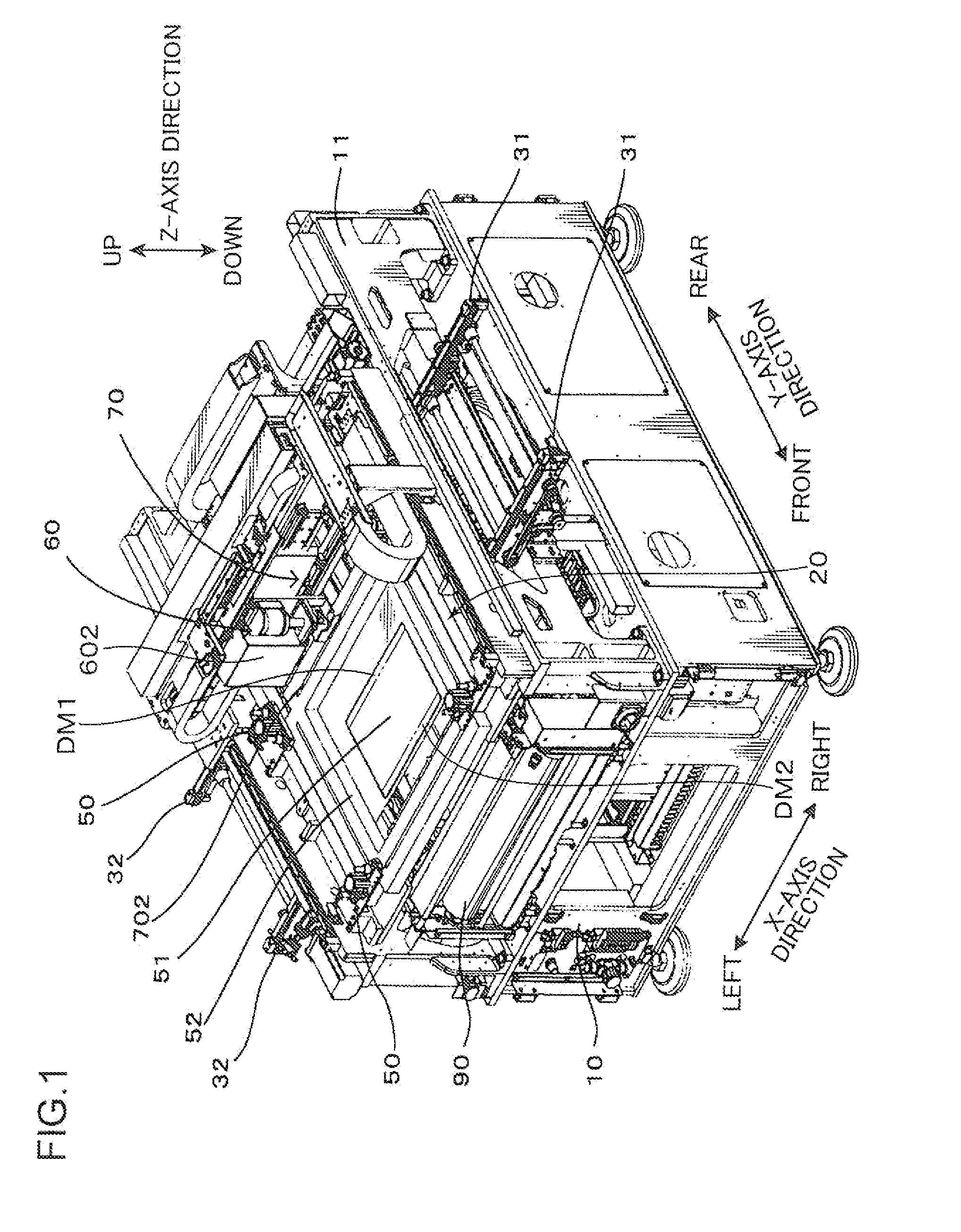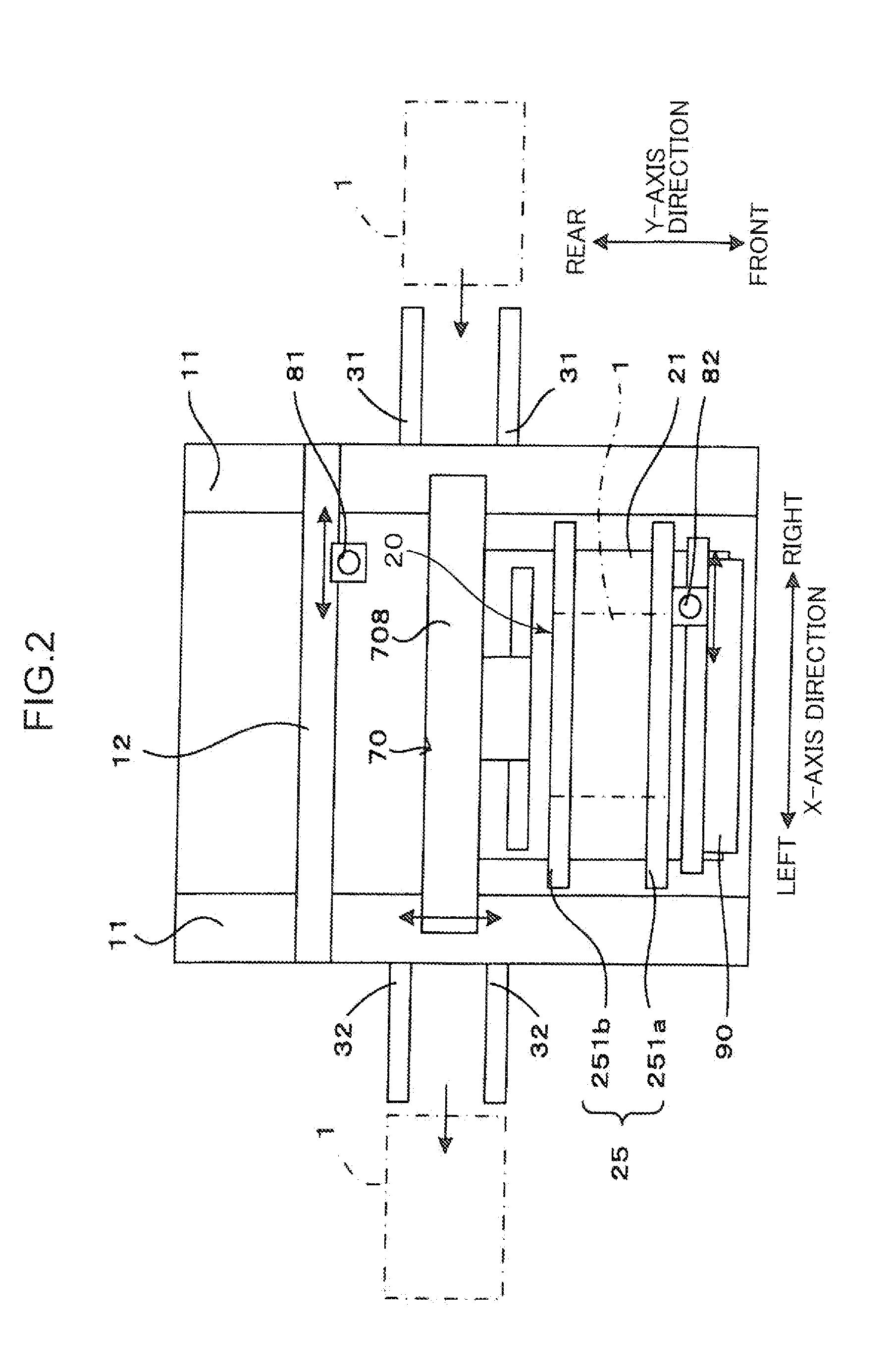Solder feeder, printer, and printing method
a feeder and printer technology, applied in the field of printing technology, can solve the problems of reducing the versatility of the device, dripping solder might adhere to an inappropriate section of the substrate, cycle loss, etc., and achieve the effect of preventing the occurrence of cycle loss and enhancing versatility
- Summary
- Abstract
- Description
- Claims
- Application Information
AI Technical Summary
Benefits of technology
Problems solved by technology
Method used
Image
Examples
first embodiment
[0024]As shown in FIGS. 1 to 3, a printer according to the present invention has a base 10 in substantially a quadrangle shape in a planar view, and a substrate delivery mechanism 20 that freely moves back and forth on the base 10 with respect to the printer. The substrate delivery mechanism 20 has a conveyor unit 25 that has a pair of main conveyors 251a, 251b capable of driving a substrate 1 on the base 10 side to side with respect to the printer. The printer also has carrying-in conveyors 31, 31 that are equipped with a right side of the base 10 and carry the unprocessed substrate 1 into the conveyor unit 25, carrying-out conveyors 32, 32 that are equipped with a left side of the base 10 and carry the processed substrate 1 out of the conveyor unit 25, and a control unit 40 that controls the entire printer (see FIG. 4). The substrate delivery mechanism 20, carrying-in conveyors 31, 31 and carrying-out conveyors 32, 32 are controlled by a substrate delivery mechanism controller 43 ...
fourth embodiment
[0074]As shown in “the fourth embodiment” column in FIG. 10, the “solder amount measuring” process and the “solder replenishing” process may be executed each time when printing is executed on a predetermined number of substrates 1. As a result, the time require for the “solder amount measuring” process or the “solder replenishing” process can be saved, improving the print efficiency.
[0075]In addition, according to the first embodiment, the amount of solder in the solder pool SP is measured by the single sensor SC that is attached to the side surface of the sub frame 722, which is located on the side opposite to the gear box 732, as shown in FIG. 5. However, the type and the number of sensors, as well as the place for disposing the sensor, are not limited. As shown in FIG. 11, for example, sensors SC1, SC2 may be attached to the rear side and the front side of the print head 704 in the Y-axis direction, and output signals from these sensors SC1, SC2 may be used separately in accordan...
PUM
| Property | Measurement | Unit |
|---|---|---|
| width | aaaaa | aaaaa |
| distance | aaaaa | aaaaa |
| size | aaaaa | aaaaa |
Abstract
Description
Claims
Application Information
 Login to View More
Login to View More - R&D
- Intellectual Property
- Life Sciences
- Materials
- Tech Scout
- Unparalleled Data Quality
- Higher Quality Content
- 60% Fewer Hallucinations
Browse by: Latest US Patents, China's latest patents, Technical Efficacy Thesaurus, Application Domain, Technology Topic, Popular Technical Reports.
© 2025 PatSnap. All rights reserved.Legal|Privacy policy|Modern Slavery Act Transparency Statement|Sitemap|About US| Contact US: help@patsnap.com



